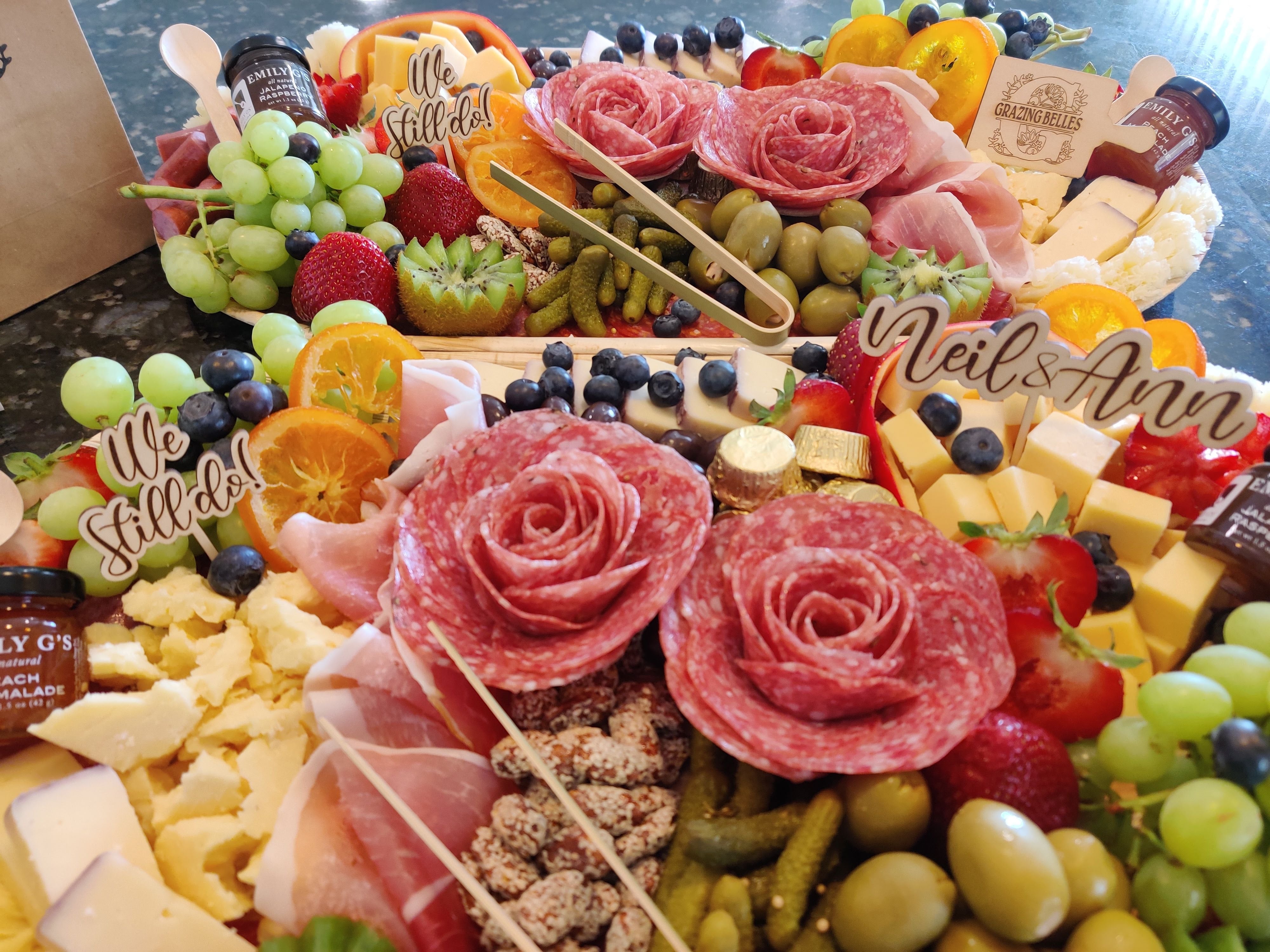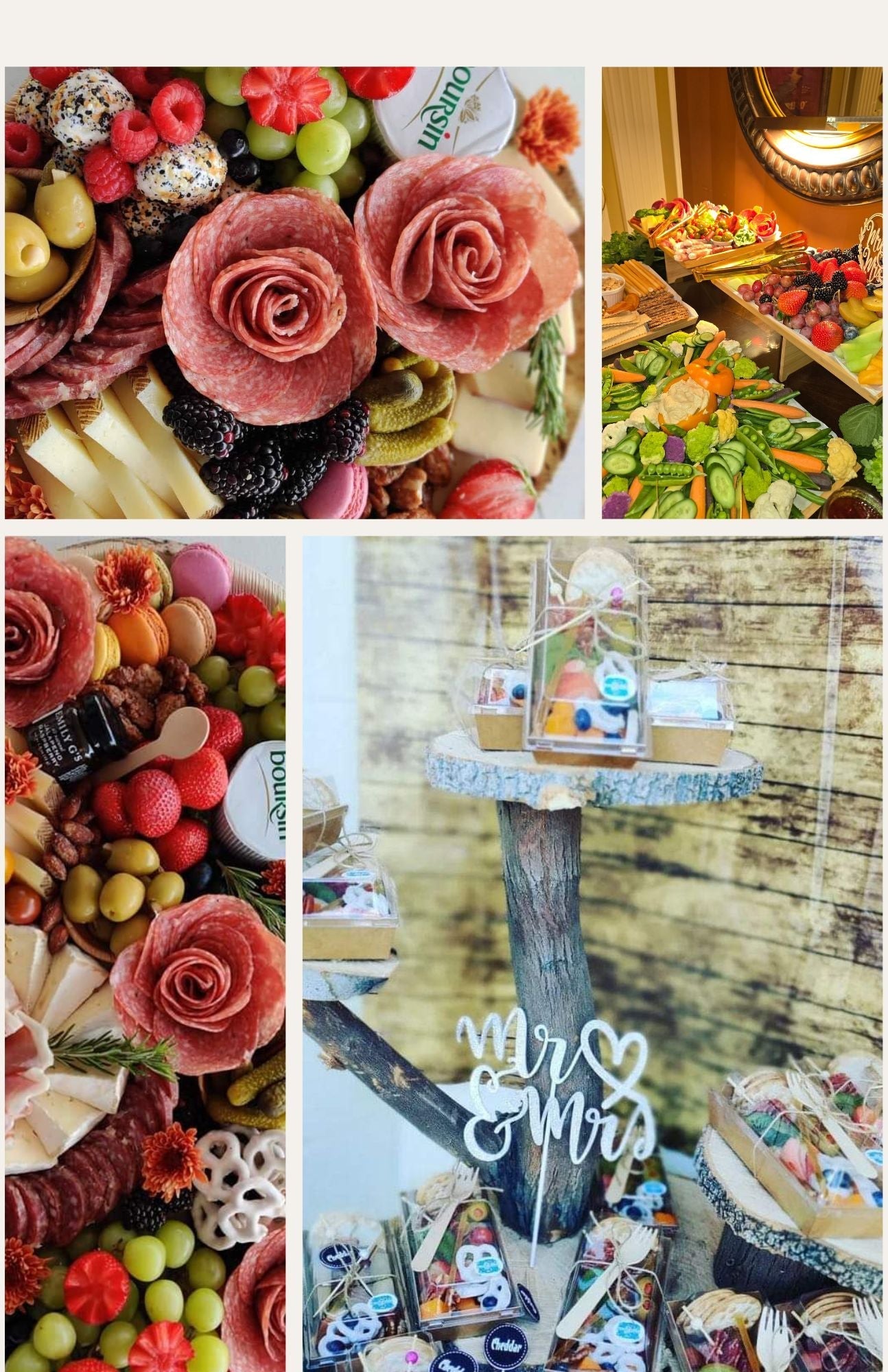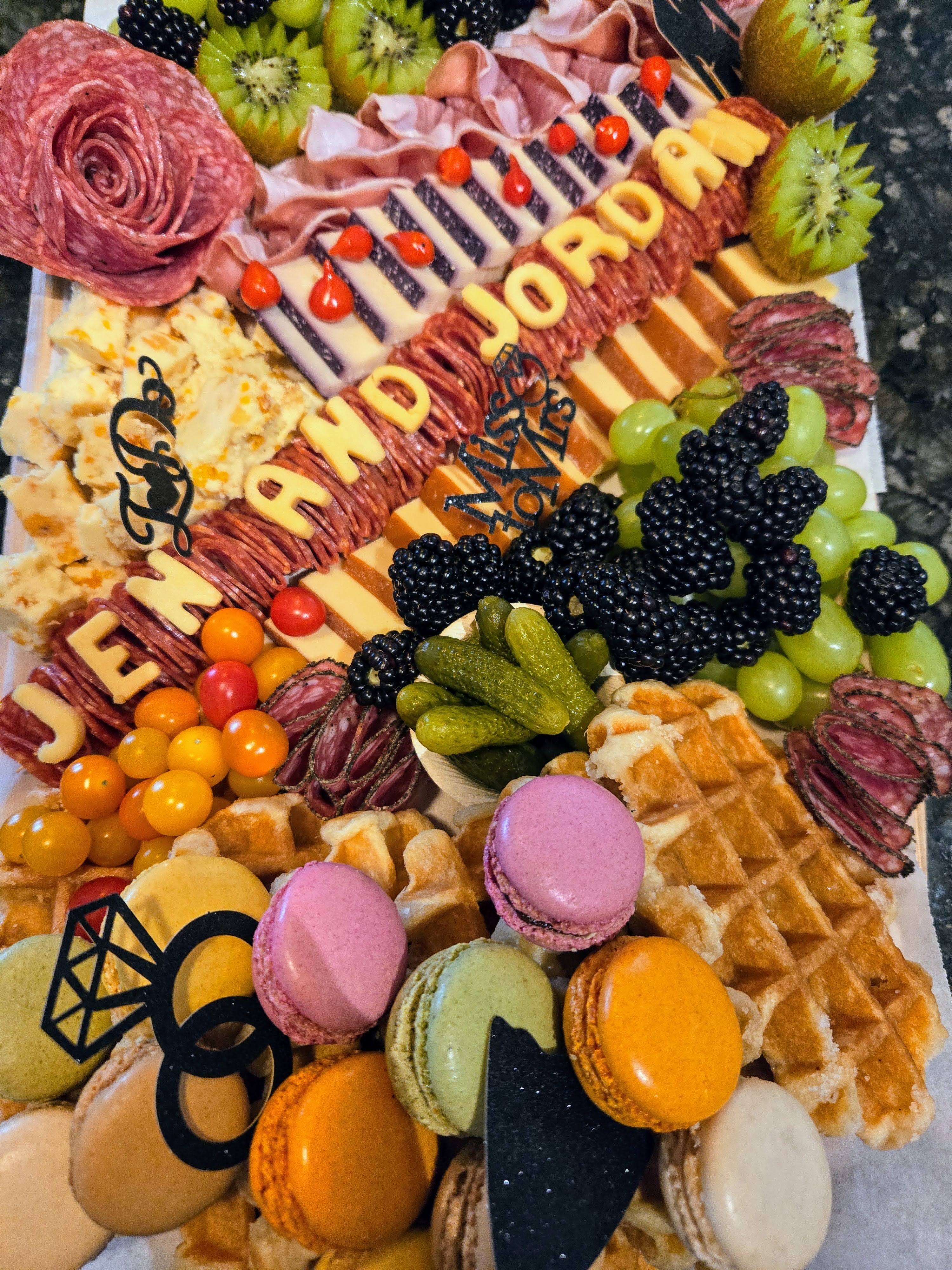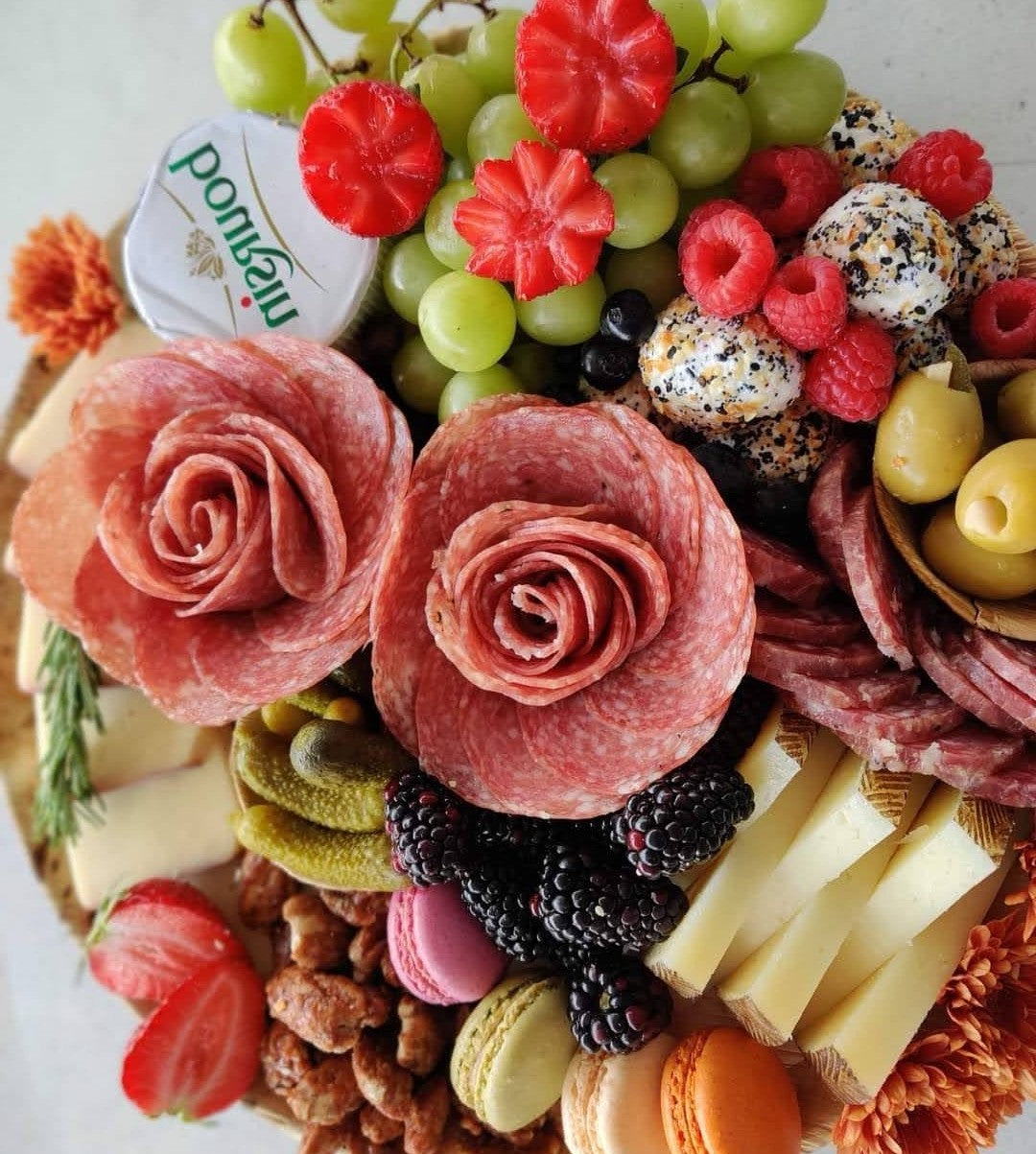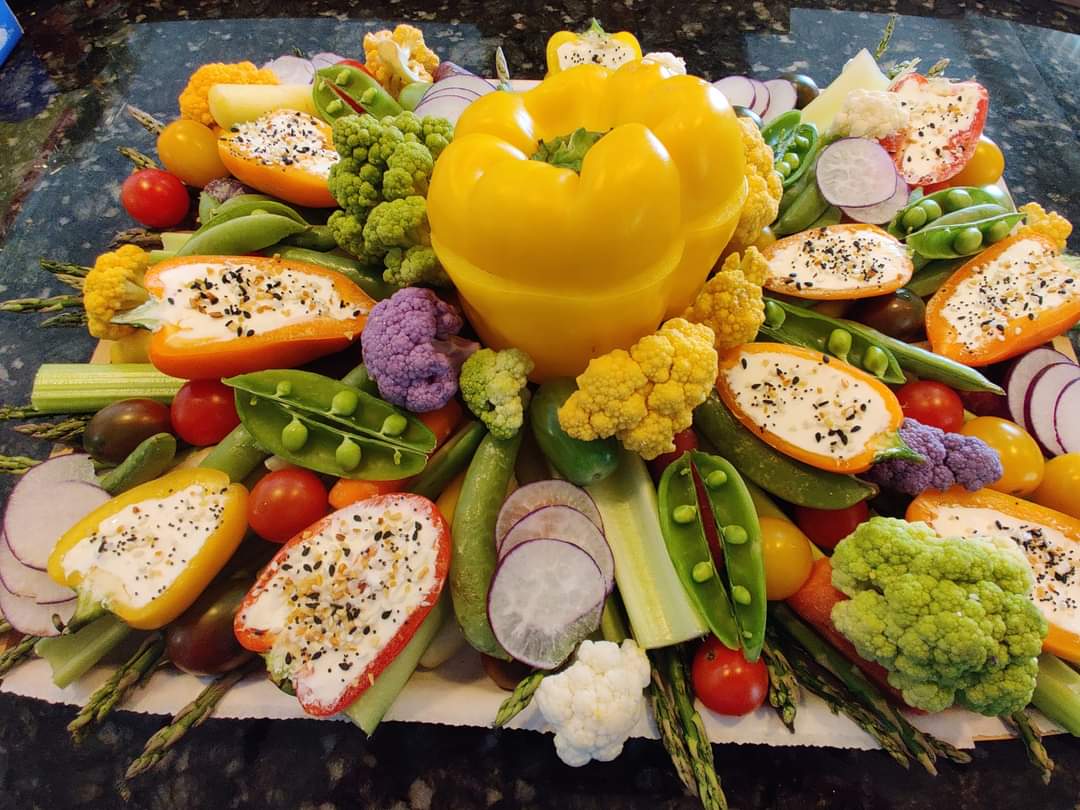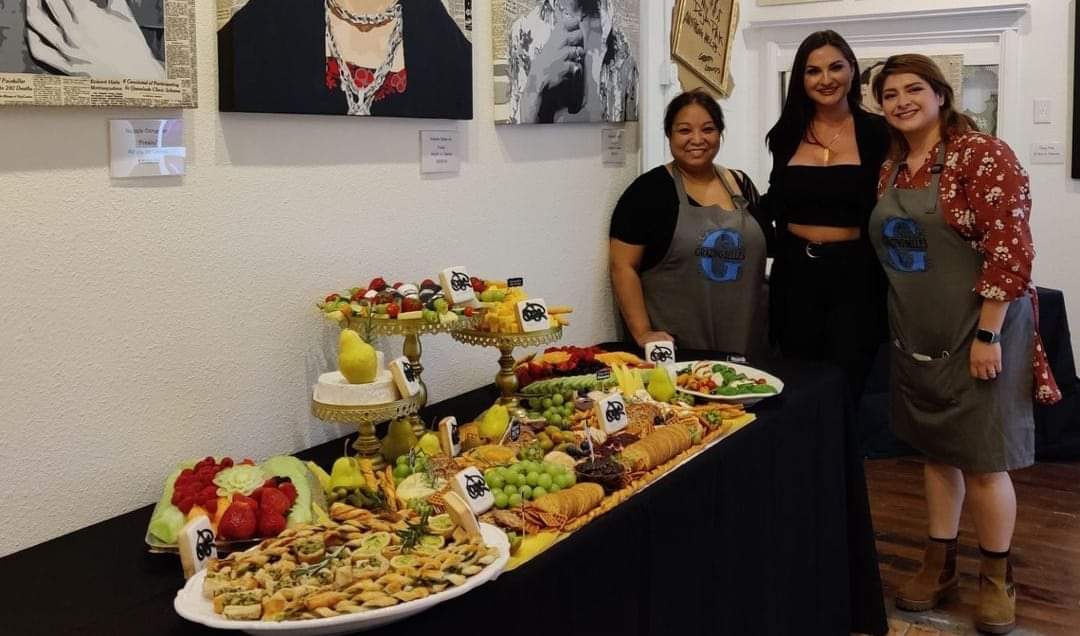
The Ultimate Guide to Grazing Tables: Is the Hype Worth It?
Dive into the world of grazing tables, the modern and interactive way of dining that's taken the culinary scene by storm. From understanding its aesthetic appeal to differentiating it from traditional buffets, this guide offers...
When it comes to hosting events or setting up a buffet for guests, the grazing table trend has taken the culinary world by storm. This modern and interactive way of dining has garnered immense popularity over recent years, but why? Let's dive deep into the world of the "grazing table" and answer some burning questions about this food phenomenon.
Introduction to Grazing Tables
What is a Grazing Table?
At its core, a grazing table is a lavish spread of food that offers a mix of textures, flavors, and visual appeal.
Unlike traditional buffets where dishes are served in large portions, a grazing table comprises smaller, bite-sized delights, enabling guests to 'graze' and sample a variety of foods at their leisure.
From gourmet cheese selections, seasonal fruits, and cold cuts to bread, dips, and more, the grazing table is a cornucopia of culinary delights.
Are Grazing Tables Still Popular?
Yes, they are! As of now, the trend shows no signs of slowing down. Their visual appeal combined with the interactive dining experience they offer makes them a preferred choice for wedding receptions by many event organizers and hosts.
Why Choose a Grazing Table?
Opting for a grazing table or charcuterie boards at your event brings a plethora of benefits:
-
Flexibility: Suitable for a range of events, from formal weddings to casual garden parties.
-
Convenience: Less structured than a traditional meal, allowing guests to eat when they wish.
-
Conversations Starter: The table itself can be a centerpiece, encouraging guests to mingle and chat about the delicious offerings.
Is a Grazing Table Worth It?
Absolutely! If you're looking for a less formal, more interactive, and visually appealing food experience, the grazing table is a worthy choice. Plus, it can be tailored to fit various budgets and preferences, making it versatile for various occasions.
Characteristics of Grazing Tables
Grazing tables have emerged as a modern and interactive dining trend, captivating both hosts and guests alike. Their allure lies not just in the food they offer but in the unique experience they provide. Here's a deeper look into their defining characteristics:
-
Visual Appeal: One of the standout features of grazing tables is their aesthetic presentation. Unlike traditional buffets, grazing tables are meticulously curated to be visually enticing. The food is often displayed on wooden boards, rustic tablecloths, or even marble slabs, making them Instagram-worthy. The vibrant colors of fruits, the rich textures of cheeses and meats, and the artful arrangement of every item make them a visual feast.
@grazingbelles -
Variety: A hallmark of grazing tables is the diverse range of foods they present. From a selection of cheeses, meats, and fresh fruits to nuts, dips, and chocolates, there's something for everyone. This variety ensures that guests can 'graze' and sample different foods, catering to a wide range of palates.
-
Interactive Dining Experience: Unlike traditional dining setups where guests are served or pick up food from a buffet line, grazing tables encourage a more interactive experience. Guests can leisurely explore the table, pick and choose their favorites, and even create their plate combinations. This interactive element not only elevates the dining experience but also fosters conversations and connections among guests.
In essence, grazing tables are more than just about delicious food; they encapsulate an experience, a visual journey, and a communal way of sharing and enjoying food.
Their unique characteristics make them a preferred choice for various events, from casual gatherings to upscale parties.
Benefits of Choosing a Grazing Table
Which Events Can Use Grazing Tables?
Grazing tables are versatile and perfect for various events, including weddings, corporate gatherings, birthdays, anniversaries, showers, holidays, and more. Whether it's a casual picnic or a formal gala, these artistic food displays elevate any occasion, impressing guests with both visual appeal and delicious treats.
-
Weddings: Grazing tables adds elegance and variety to a wedding reception, often serving as a beautiful and interactive centerpiece. With a wedding reception, you can be spoiled by choices, but a charcuterie grazing table allows everyone to enjoy it all day.

-
Corporate Events: Perfect for impressing clients, colleagues, or employees with a sophisticated and visually appealing food display. Perfect for cocktail hour.

-
Birthday Parties: From kids' birthdays to milestone celebrations, grazing tables offer a unique way to cater to diverse tastes.
-
Anniversary Parties: Commemorate special moments with an exquisite spread that symbolizes years of love and togetherness.
-
Bridal Showers: Delight guests with an array of delicious treats as they celebrate the bride-to-be.
-
Baby Showers: Grazing tables are a delightful addition to honor the mom-to-be and satisfy guests' cravings.

-
Holiday Gatherings: Elevate your holiday festivities with a festive and delectable grazing table.
-
Engagement Parties: Celebrate your love story with an appetizing display of culinary delights.
-
Graduation Parties: Impress graduates and their guests with a creative and tasteful spread.
-
Cocktail Receptions: Grazing tables complement cocktail parties by offering an assortment of finger foods.
-
Fundraisers: Enhance your fundraising event by providing donors and supporters with a memorable dining experience.
-
Product Launches: For businesses, grazing tables can make product launches more memorable and engaging.
-
Art Exhibitions: Add a touch of sophistication to art events by incorporating visually appealing grazing tables.
-
Outdoor Picnics: Enjoy the great outdoors with a convenient and beautiful spread of snacks and bites.
-
Film Screenings: Enhance movie nights or film festivals with gourmet grazing options.
-
Sports Viewing Parties: Whether it's the Super Bowl or the World Cup, grazing tables keep sports enthusiasts well-fed.
-
Family Reunions: Gather your loved ones around a bountiful grazing table for a heartwarming reunion.
-
Book Clubs: Elevate your book club meetings with a literary-inspired grazing table.
-
Charity Events: Impress donors and supporters at charity galas with a luxurious grazing experience.
These are just some of the many occasions where grazing tables can be a hit, offering a combination of aesthetic appeal and culinary delight for guests.
Comparison: Grazing Table vs. Buffet
Both grazing tables and buffets are popular choices for serving food at events, but they offer distinct experiences and cater to different preferences. Here's a deeper dive into their differences:
-
Presentation: Traditional buffets often rely on chafing dishes, large serving bowls, and standardized plate arrangements. The focus is on quantity and ensuring that food remains warm. On the other hand, grazing tables prioritize aesthetics. Every item is thoughtfully placed, often on wooden boards, rustic slabs, or decorative trays. The arrangement is designed to be visually appealing, with contrasting colors and textures inviting guests to explore and indulge.
-
Food Types: Buffets typically offer a broader range of food options, including both hot and cold dishes. They might have sections dedicated to salads, main courses, side dishes, and desserts. Grazing tables, in contrast, predominantly feature cold or room-temperature foods. These might include cheeses, deli meats, fruits, nuts, dips, and bread. The emphasis is on finger foods and items that can be easily nibbled on without the need for complex serving utensils or heating equipment.
-
Experience: The buffet experience is often about variety and ensuring guests have a full meal, moving systematically from starters to main courses and then desserts. Grazing tables offer a more relaxed and interactive dining experience. They encourage guests to meander, pick, and choose, creating their unique plate combinations. It's less about having a structured meal and more about leisurely sampling and savoring a wide array of flavors.
-
Space & Setup: Buffets often require a more structured setup with designated areas for different types of dishes and clear paths for guests to follow. Grazing tables, with their spread-out design, can be more flexible in terms of space, allowing for a more organic flow of guests around the table.
-
Duration: Buffets are typically time-bound, especially if hot dishes are involved. Grazing tables, given their focus on cold or room-temperature foods, can remain set up for longer durations, allowing guests to return and graze at their own pace.
While both grazing tables and buffets offer abundant food choices, the experience they provide is distinct. The choice between the two often depends on the event's nature, the host's preference, and the desired ambiance.
Value Proposition of Grazing Tables
Budgeting for a Grazing Table
The cost can vary based on factors like the quality of ingredients, the size of the spread, and any specific dietary requirements. However, with smart choices, it's possible to create a stunning grazing table without breaking the bank.
How to Create a Cheap Grazing Table?
Here are some budget-friendly tips:
-
DIY Approach: Instead of hiring a professional, consider creating the table yourself. With a bit of research and creativity, you can achieve great results.
-
Seasonal and Local: Opt for ingredients that are in season and locally available. They're often cheaper and fresher.
-
Bulk Buying: Purchasing items in bulk can lead to significant savings.
Setting Up the Grazing Table
What should be on a grazing table?
A grazing table should be a feast for both the eyes and the palate. Ideally, it includes a variety of textures and tastes. Key components are assorted cheeses (soft, hard, and blue), deli meats, fresh and dried fruits, nuts, olives, pickles, dips, bread, and crackers.

Depending on preference, you can also add chocolates, veggies, seafood, or even mini sandwiches. The aim is to provide a spread that caters to different palates and preferences, ensuring everyone finds something they love.
Beyond the basics of cheeses, meats, and fruits, a grazing table can also feature gourmet and unexpected delights.
Think marinated artichokes, stuffed peppers, gourmet jams or honey, smoked salmon, sushi rolls, quiches, or even bite-sized desserts.
Regional specialties or themed items can also be included, such as Mediterranean olives and hummus or Asian spring rolls and dipping sauces.
Your grazing table can be as unique as you want it to be, reflecting personal tastes, the occasion, or the season.
How do you layout a grazing table?
Laying out a grazing table is an art. Start with the larger items or focal points, like cheese wheels or big bowls of dip.
Then, add cured meats, folding or fanning them for visual interest. Intersperse with fruits, both fresh and dried, for pops of color. Fill gaps with nuts, olives, and smaller items.
Create height with stands or bowls. Incorporate fresh herbs or flowers for garnish.
Ensure the flow is natural and every item is easily accessible. Remember to layer and group similar items, while also ensuring a mix across the table so guests can access a bit of everything from any spot.
What do you cover the table with for a grazing table?
When setting up a grazing table, it's essential to start with a clean and appropriate base.
Food-safe parchment paper, butcher's paper, or large wooden boards are popular choices.
For a more upscale look, consider using slate or marble slabs.
If you're looking to add color or match a theme, fabric table runners or cloth napkins can work, but always ensure any fabric is clean and safe for food contact.
Whichever covering you choose, it should complement the aesthetics of your spread and also function to keep the food clean and presented well.
How do you decorate a grazing platter?
Decorating a grazing platter is about enhancing its visual appeal. Start with your food: arrange it to showcase its colors and textures. Use fresh herbs like rosemary or basil as garnish.
Edible flowers can add a touch of elegance. Bowls of colorful dips, jams, or olives can act as focal points. Use varying heights, with raised platforms or bowls to create dimension.
Incorporate different shapes and sizes, using small jars or bowls for contrasting effects.
Remember, the goal is to entice people to dive in, so create a layout that's both beautiful and approachable.
How do I keep my grazing table cold in the summer?
Keeping a grazing table cold, especially in warmer months, can be a challenge but is essential for food safety. Here are some tips:
-
Use shaded areas: Set up your table under a canopy or shaded spot.
-
Ice packs or trays: Place these beneath the serving platters to keep items cold.
-
Use cooler materials: Slate or marble trays can stay cool for longer once chilled.
-
Serve in intervals: Instead of placing everything out at once, refill the table with fresh items from the cooler.
-
Cold dishes: Consider using dishes that are naturally cold, like chilled gazpacho or cucumber salads, to keep the overall temperature down.
Deep Dive into Grazing vs Charcuterie
What is the difference between charcuterie and grazing?
Charcuterie refers specifically to the art of preparing and assembling deli meats, along with associated accompaniments like cheeses, bread, and pickles.
The term finds its origins in France and emphasizes a combination of flavors and textures.
Grazing, on the other hand, encompasses a broader style of dining.
A grazing table may include charcuterie elements but also extends to fruits, dips, chocolates, and more. Essentially, while charcuterie is a component, grazing offers a wider variety of foods presented for communal sharing.
What is the difference between a charcuterie board and a grazing platter?
A charcuterie board is primarily focused on deli meats, paired with cheeses, bread or crackers, and some accompaniments like olives or nuts.
The essence of charcuterie is the artful combination of these specific elements to create a balanced experience.
A grazing platter, however, has a broader scope. While it can include charcuterie elements, it's not limited to them.
A grazing platter can be a medley of various foods, from fruits and veggies to dips, chocolates, and more.
It's essentially a larger spread offering a more extensive variety of foods, designed for communal eating and often tailored to the preferences of the attendees.
What are the 3 kinds of charcuterie?
Charcuterie encompasses a diverse range of cured meats, but the three primary types are:
-
Whole Muscle Meats such as prosciutto or coppa, where entire muscle cuts are salted and air-dried.
-
Sausages, which include items like salami or chorizo. These are ground meats combined with spices, often encased, and then dried or smoked.
-
Pâtés and Terrines, which are meat mixtures cooked in a vessel or wrapped in pastry.
What are three charcuterie examples?
Charcuterie boasts a vast range of delightful options. Three prime examples include:
-
Prosciutto - A delicate, thinly sliced ham, often from Italy.
-
Salami - A fermented, dried sausage with various flavors and spice profiles.
-
Chicken Liver Pâté - A smooth spread made from chicken livers, often combined with herbs, spices, and a touch of cognac or brandy.
What not to put on a charcuterie board?
While a charcuterie board is adaptable, certain items can compromise its integrity. Avoid overly pungent or wet items that might overpower other flavors or make the board soggy.
Keep strong fish flavors like anchovies separate, unless it fits your theme.
Avoid highly processed meats, as they can detract from the artisanal quality of the board.
Remember, the essence of charcuterie is balance, so avoid anything that would disrupt the harmony of flavors, textures, and visual appeal.
What are the top 5 cheeses for charcuterie?
The ideal charcuterie board will showcase a variety of cheeses to complement the meats:
-
Brie or Camembert - Creamy and soft with a mild, buttery flavor.
-
Manchego - A firm Spanish cheese with a crumbly texture and nutty taste.
-
Blue Cheese - Offers a bold, tangy flavor that contrasts well with sweet accompaniments.
-
Gouda - Especially aged varieties which are rich, sweet, and slightly caramel-like.
-
Goat Cheese - Tangy and soft, it pairs beautifully with fruits and jams.
What are the two main charcuterie items?
The two cornerstone items of any charcuterie board are cured meats and cheeses. Within these categories, you can find a myriad of options, each with its unique flavor and texture.
Examples include prosciutto or salami for meats, and brie or manchego for cheeses. The complementary relationship between these two main items, enhanced by accompaniments like olives, nuts, and jams, forms the heart and soul of a charcuterie experience.
What is the most famous charcuterie?
One of the most internationally renowned charcuterie items is Prosciutto di Parma from Italy.
This dry-cured ham, known for its delicate and slightly sweet flavor, is made under strict conditions in the Parma region. With its melt-in-the-mouth texture and savory side,
Prosciutto di Parma has become synonymous with premium charcuterie and is a must-have on many boards.
What are the rules of charcuterie?
Creating a charcuterie board is both an art and a science. Some fundamental rules include:
-
Variety - Offer different textures and flavors: hard, soft, creamy, salty, and sweet.
-
Balance - Don't overwhelm with too much of one flavor.
-
Freshness - Use fresh and quality ingredients for the best experience.
-
Pairing - Think about complementary pairings, like brie with fig jam or salami with olives.
-
Accessibility - Make sure everything is easy to grab, and offer utensils, such as cheese knives for spreads or tricky items.
-
Aesthetic - Arrange with color contrasts, and consider garnishes like rosemary or edible flowers.
-
Temperature - Serve cheeses at room temperature for best flavor, but ensure meats remain cool.
What is the difference between charcuterie and hors d'oeuvres?
While both charcuterie and hors d'oeuvres are associated with appetizers or starters, they differ in content and presentation.
Charcuterie primarily revolves around cured meats and accompaniments, served on a board or platter.
Hors d'oeuvres, a French term, refers to bite-sized dishes served before a meal. These can range from tiny sandwiches to stuffed mushrooms or even sushi bites.
Essentially, while charcuterie is a specific type of appetizer focusing on meats and cheeses, hors d'oeuvres is a broader category encompassing a wide range of small dishes.
Miscellaneous Tips and FAQs
What meat is good for grazing platter?
For a grazing platter, meats that offer varied textures and flavors are ideal. These include:
-
Prosciutto - Thin, melt-in-the-mouth slices of cured ham.
-
Salami - Available in various flavors and spice levels.
-
Coppa - A dry-cured pork shoulder or neck meat.
-
Soppressata - An Italian dry salami with a robust flavor.
-
Mortadella - A finely ground pork sausage with pistachios and pepper grains.
-
Chorizo - Spicy cured sausage from Spain or Portugal. Remember to balance the rich flavors of these meats with lighter accompaniments on the platter.
What cheese is good for a grazing platter?
A diverse range of cheeses enhances a grazing platter. Include:
-
Soft Cheeses like brie, camembert, or goat cheese which offer creamy textures.
-
Semi-Hard Cheeses such as cheddar, swiss, or gouda, known for their versatility.
-
Hard Cheeses like parmesan, pecorino, or aged manchego which offer a strong, nutty profile.
-
Blue Cheeses such as roquefort, stilton, or gorgonzola for a bold, tangy punch.
-
Fresh Cheeses like mozzarella, feta, or ricotta for a milder, milky flavor. Ensure a mix of mild to strong flavors to cater to varying guest preferences.
What is the best bread for a grazing table?
Selecting bread for a grazing table involves finding options that complement your meats and cheeses. Fresh baguette slices, both plain and multigrain, are a timeless choice. Crusty sourdough or ciabatta, when cut into bite-sized pieces, provide delightful texture contrasts.
Flavored breadsticks or thin, crispy flatbreads can add an element of crunch. Rye or pumpernickel squares pair well with strong cheeses or smoked meats.
Lastly, consider including gluten-free bread options for those with dietary restrictions. The goal is to offer variety without overshadowing the main components.
How do you make a grazing platter look good?
Visual appeal is crucial for a grazing platter. Start by selecting a variety of colors, using vibrant fruits, assorted cheeses, and different meats.
Layer items for depth and dimension.
Incorporate different shapes and sizes, using small bowls or jars for dips or pickles. Garnish with fresh herbs or edible flowers. Consider the platter's flow, guiding the eye from one delectable item to the next. Above all, balance is key; ensure each section of your platter is equally enticing, and avoid overcrowding.
How long does a grazing platter last?
The longevity of a grazing platter largely depends on its components. While cured meats and hard cheeses can stay fresh for several hours at room temperature, softer cheeses, fresh veggies, fruits, and dips may deteriorate faster.
Ideally, a grazing platter should be consumed within 2-4 hours of being set out, especially if outdoors or in warm environments. After this time, assess each component for freshness. Always be cautious with items that can spoil easily and consider replenishing them or setting out smaller portions initially.
How long can you leave a grazing table out?
A grazing table's time out will depend on the foods presented and environmental conditions. Generally, perishable items like meats, cheeses seasonal fruits, and dips shouldn't be left out for more than 2-4 hours, especially in warm conditions.
After this, bacteria growth can accelerate, risking foodborne illnesses. For outdoor or summer events, be particularly vigilant.
It's prudent to set up your table in a shaded, cool spot or use cooling methods like ice trays. If in doubt, regularly rotate items to ensure what's on display remains fresh and safe to consume.
Can you make a grazing platter the night before?
Yes, parts of a grazing platter can be prepped the night before to save time. Meats and cheeses can be pre-sliced and stored in airtight containers in the refrigerator.
Similarly, dips, fruits, and other accompaniments can be portioned out. However, it's best to assemble the platter shortly before serving to ensure freshness and prevent items from drying out or becoming stale.
Storing prepped items properly and ensuring they're kept cold will help maintain their quality until assembly.
Can you make a charcuterie board the night before?
Preparing charcuterie in advance can be convenient, but there are precautions to take. While cured meats and cheeses can be pre-sliced and stored in airtight containers, assembling the entire board the night before might lead to some items drying out, especially delicate meats like prosciutto.
If prepping ahead, consider assembling just before the event to maintain the freshness and texture of each component. Always ensure that prepped items are stored correctly to keep their flavors and quality intact.
Miscellaneous Topics & FAQs
How do you fold meat for a grazing table?
Presentation plays a vital role in a grazing table's appeal. For meats like prosciutto or salami, consider folding or rolling them to create volume and visual interest. For thinly sliced meats, gather them accordion-style, ensuring they're easily accessible for guests. Larger slices can be rolled or folded in half and then half again, creating a fan or rosette effect. The goal is to showcase the meat's texture and make it inviting to pick up, all while ensuring it occupies space artfully on the table.
How do you keep crackers from getting soggy on a charcuterie board?
To prevent crackers from becoming soggy on a charcuterie board:
-
Isolation - Keep them separated from wet or moist ingredients like dips, olives, or fresh fruits.
-
Timing - Add crackers to the board just before serving, ensuring they remain crisp for guests.
-
Layering - Consider using parchment paper or leaves like lettuce as a barrier between crackers and moist ingredients.
-
Serving Separately - Provide crackers in a separate bowl or basket adjacent to the board.
-
Quality Matters - Invest in high-quality crackers, as these often retain their crunch longer.
How do you keep charcuterie boards from drying out?
To maintain the freshness of a charcuterie board:
-
Covering - If prepared in advance, cover it with a damp (not wet) cloth or plastic wrap.
-
Assembly Timing - Assemble closer to serving time, especially delicate items like soft cheeses or thinly sliced meats.
-
Bowl for Dips - Use small bowls for moist items like dips or jams, which can provide some humidity to the board.
-
Limit Air Exposure - Reduce the board's exposure to air by placing it in a cooler or shaded area until ready to serve.
Should you refrigerate a charcuterie board?
While you can refrigerate components of a charcuterie board, avoid refrigerating a fully assembled board as some items, especially cheeses, are best enjoyed at room temperature.
If you need to prepare in advance, store individual items in the fridge and assemble them shortly before serving.
If a fully assembled board must be refrigerated (for a short duration), ensure it is taken out well before serving, ideally 30 minutes to an hour, allowing the flavors and textures to be enjoyed at their best.
What is the 3 3 3 3 rule for charcuterie board?
The 3 3 3 3 rule is a guideline to help create a balanced charcuterie board. It suggests selecting:
-
Three types of meat: Incorporate a range of textures and flavors like a hard salami, a soft prosciutto, and a spicy chorizo.
-
Three kinds of cheese: Opt for a soft cheese like brie, a hard cheese like aged cheddar, and a blue or flavored cheese.
-
Three kinds of extras: Think olives, pickles, and roasted nuts or dried fruits.
-
Three types of bread or crackers: A crunchy baguette slice, artisanal crackers, and a gluten-free option. Following this rule ensures variety and a harmonious blend of flavors and textures on your board.
Is grazing better than 3 meals?
Grazing, or consuming smaller meals or snacks throughout the day, has its proponents and detractors. Some believe grazing can stabilize blood sugar levels, prevent overeating, and boost metabolism. However, the success of this approach largely depends on the quality and quantity of food consumed. Overgrazing on unhealthy snacks can lead to weight gain and nutrient deficiencies. Traditional 3 meals a day can also be beneficial, especially when balanced and nutrient-rich. The best approach depends on individual preferences, lifestyle, and specific health needs. Consultation with a nutritionist or healthcare provider can help determine the best dietary pattern for an individual.
In Conclusion
The grazing table is more than just a dining option; it's an experience that brings people together. Whether you're hosting a serious party, large event or an intimate gathering, consider the charm and flexibility a grazing table can bring to your occasion. With the right approach, it can be a memorable and budget-friendly addition to any event. Happy grazing!





